How to Fertilize Lavender Plants for Peak Bloom and Growth
- February 21, 2024
- 0 comment
Learn to fertilize lavender for peak bloom and growth with our expert tips. Achieve lush, fragrant gardens with the right nutrition. Lavender, with its enchanting fragrance and vibrant blooms, is a favorite among gardeners and landscapers alike. Beyond its beauty, lavender is prized for its versatility, finding its place in culinary, cosmetic, and therapeutic applications.
However, the secret to unlocking the full potential of this aromatic herb lies in understanding and implementing the right fertilization practices. This article aims to guide you through the essentials of fertilizing lavender plants, ensuring they achieve peak bloom and vigorous growth.
List of Guides on How to Fertilize Lavender Plants
- Test the Soil
- Choose the Appropriate Fertilizer
- Timing Your Fertilization
- Apply Fertilizer Correctly
- Watering After Fertilization
- Monitor and Adjust
Understanding Lavender’s Nutritional Needs
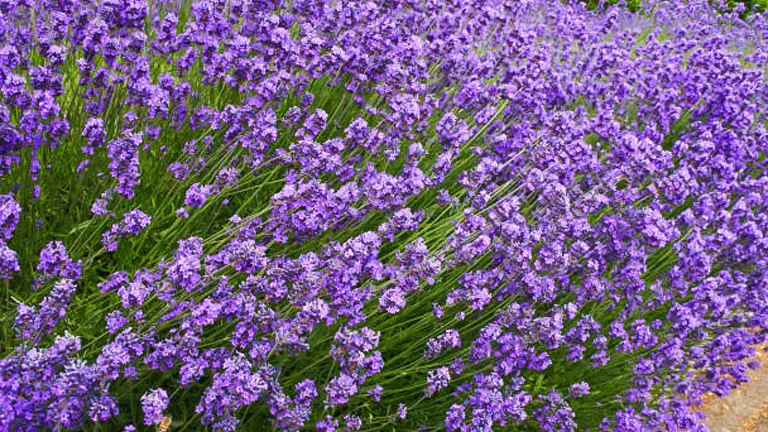
Lavender is a resilient, drought-tolerant plant that thrives in well-drained soil and full sun. Despite its hardy nature, achieving the lush, vibrant blooms lavender is known for requires a keen understanding of its nutritional needs. Lavender plants favor a balanced diet, but with a light touch, as they are prone to suffer in overly fertile soil.
Essential Nutrients
Nitrogen (N)
- Role: Nitrogen is a key component of chlorophyll, the molecule responsible for photosynthesis, and is crucial for foliage growth.
- Optimal Range: For lavender, soil nitrogen levels should be kept moderate. A study published in the Journal of Plant Nutrition suggests that nitrogen levels exceeding 150 ppm (parts per million) can inhibit floral development, shifting the plant’s energy towards foliar growth.
Phosphorus (P)
- Role: Phosphorus plays a pivotal role in energy transfer within the plant, supporting root development and flowering.
- Optimal Range: Soil phosphorus levels around 30-50 ppm are ideal for lavender, promoting strong root systems and aiding in the formation of blooms.
Potassium (K)
- Role: Potassium is crucial for water regulation, disease resistance, and the synthesis of proteins and starches.
- Optimal Range: A potassium level of 150-200 ppm supports overall plant health and resilience, enhancing drought resistance and flower quality.
Lavender’s preference for alkaline soil means that soil pH significantly impacts nutrient availability. Ideally, the soil pH should range between 6.5 and 8.0. Ensuring your lavender plants are growing in the correct pH conditions maximizes nutrient uptake, promoting healthier growth and blooming.
Soil pH and Nutrient Availability
The availability of these nutrients to lavender plants is significantly influenced by soil pH, with lavender preferring a slightly alkaline environment. Here’s how pH affects nutrient uptake:
- pH Range 6.5 – 8.0: This range is optimal for lavender, enhancing the availability of nitrogen, phosphorus, and potassium, while minimizing the risk of toxic elements like aluminum and manganese.
- Adjusting pH: If soil tests reveal a pH outside this range, limestone can be added to raise the pH, while sulfur compounds are used to lower it.
Nutritional Strategy
Incorporating scientific data into lavender care involves not just understanding the what and why but also the how. Here are practical tips based on scientific insights:
- Fertilization Timing: Align fertilization with lavender’s growth cycles, ideally in early spring and again just before the bloom period. Avoid late-season fertilization that can promote tender growth susceptible to winter damage.
- Application Method: Apply fertilizers in a band spread around the drip line of the plant rather than directly at the base, to encourage root expansion and efficient nutrient uptake.
- Monitoring: Regular soil testing (every 1-2 years) can help maintain the ideal nutrient balance and pH level, preventing nutrient deficiencies or toxicities.
Lavender Nutritional Needs & Soil pH
| Parameter | Optimal Level/Range | Importance in Lavender Care | Scientific Insights |
|---|---|---|---|
| Nitrogen (N) | <150 ppm | Critical for chlorophyll production and foliage growth. Excessive amounts can deter blooming. | Nitrogen supports amino acid and protein synthesis, which are vital for plant growth. However, levels exceeding 150 ppm can shift energy from bloom production to leaf development. |
| Phosphorus (P) | 30-50 ppm | Supports root development and enhances flowering. Essential for ATP energy transfer. | Phosphorus is key for energy storage and transfer within the plant, affecting root growth and the energy available for bloom formation. |
| Potassium (K) | 150-200 ppm | Enhances plant health, drought resistance, and flower quality. Important for osmoregulation and enzyme activation. | Potassium regulates stomatal opening, crucial for water use efficiency and resistance to drought stress, while also activating enzymes involved in energy metabolism. |
| Soil pH | 6.5 – 8.0 | Affects nutrient availability and uptake. Lavender prefers slightly alkaline conditions. | Soil pH in this range optimizes the availability of N, P, K, and micronutrients, reducing the solubility of potentially toxic ions like aluminum and manganese. |
Key Takeaways for Gardening Enthusiasts:
- Nutrient Balance: Lavender’s optimal growth requires a delicate balance of nutrients, underscoring the importance of not just the presence but the right concentration of each element.
- pH Influence: The slightly alkaline preference necessitates regular soil testing and adjustments to maintain within the ideal pH range, ensuring maximum nutrient efficacy.
- Scientific Application: Integrating these insights into your gardening practice involves a blend of observation, measurement (through soil testing), and targeted amendment, reflecting a true scientific approach to plant care.
Choosing the Right Fertilizer for Lavender
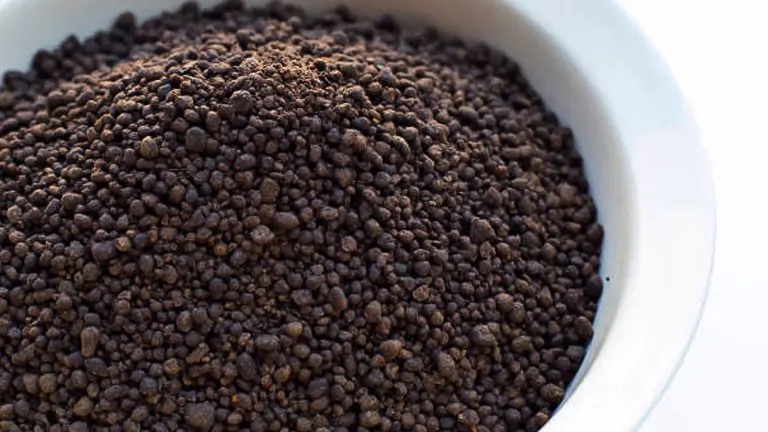
The selection of an appropriate fertilizer for lavender is crucial, as it directly impacts the plant’s health, bloom quality, and essential oil concentration. Lavender’s Mediterranean origin dictates its preference for soils that are not overly fertile but have specific nutrient balances.
- Organic vs. Synthetic Fertilizers: Organic fertilizers, like compost, worm castings, or fish emulsion, offer a slow-release mechanism that perfectly aligns with lavender’s low nutrient requirements. These natural options not only feed the plant but also enrich the soil microbiome, enhancing soil structure and water retention. On the other hand, synthetic fertilizers provide a controlled, consistent nutrient supply. Look for products labeled as low in nitrogen but balanced in phosphorus and potassium (e.g., a 5-10-10 NPK ratio) to encourage blooming without excessive foliage growth.
- Micronutrients Matter: Lavender benefits from micronutrients like magnesium and calcium, which are often naturally present in alkaline soils. In cases where soil tests indicate deficiencies, consider using a fertilizer that includes these essential micronutrients or applying dolomitic lime to both adjust pH and supply magnesium.
- The Role of Mycorrhizae: Incorporating mycorrhizal fungi into the planting hole or when top-dressing lavender can significantly enhance nutrient uptake and stress tolerance. These beneficial fungi form symbiotic relationships with plant roots, improving access to water and nutrients.
When to Fertilize Lavender
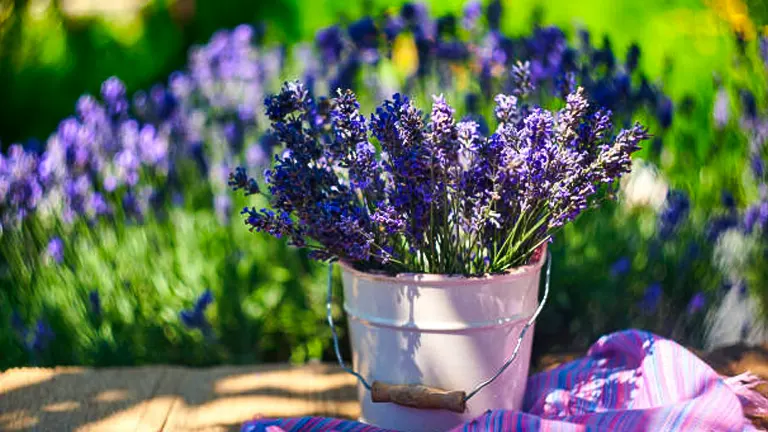
Understanding the natural growth cycle of lavender is key to optimizing fertilization timing. Lavender enters active growth in spring and prepares for dormancy as the cooler months approach. Aligning fertilization with these phases supports healthy development and prolific blooming.
- Spring Awakening: The initial fertilization should occur in early spring (March to April, depending on your climate zone), as lavender begins to show new growth. This application kickstarts the growth cycle, providing the nutrients necessary for the upcoming active period.
- Pre-Bloom Boost: A second, lighter application in late spring or early summer, approximately 4-6 weeks before the main bloom, can bolster flower production. This timing corresponds with the plant ramping up its energy reserves for blooming.
- Avoiding Late Season Fertilization: Refrain from fertilizing lavender late in the season. Post-bloom fertilization can stimulate new growth vulnerable to damage from winter temperatures. Instead, focus on preparing the plant for dormancy through proper pruning and hydration management.
Practical Tips for Fertilizer Application
- Application Technique: When applying fertilizer, distribute it evenly around the drip line of the plant, avoiding direct contact with the foliage and stems. This method ensures that nutrients are accessible to the roots, where they’re most needed.
- Watering Post-Fertilization: After applying fertilizer, lightly water the area to help dissolve and distribute the nutrients into the soil. However, be mindful of lavender’s preference for drier conditions and avoid overwatering.
- Observation and Adjustment: Monitor your lavender’s response to fertilization, adjusting practices as needed. Signs of over-fertilization include lush, green growth with few or no blooms, while under-fertilized plants may exhibit stunted growth and sparse blooming.
Step-by-Step Guide to Fertilizing Lavender
Step 1: Test the Soil
- Objective: Determine your garden’s current nutrient levels and pH to understand what your lavender really needs.
- How-To: Use a soil test kit available from garden centers or online. Collect soil samples from around your lavender plants, following the kit’s instructions for the most accurate results.
Step 2: Choose the Appropriate Fertilizer
- Objective: Select a fertilizer that complements the specific needs of your lavender, based on soil test results.
- Options:
- For nutrient-balanced soil, opt for organic compost or a low-nitrogen, slow-release fertilizer with a higher phosphorus content (e.g., 5-10-10 NPK ratio).
- If your soil lacks specific nutrients or has pH imbalances, select a fertilizer or soil amendment that addresses these issues.
Step 3: Timing Your Fertilization
- Objective: Apply fertilizer at moments when lavender can best utilize the nutrients for growth and bloom.
- When-To:
- Early Spring: Just as the plant shows new growth, to kickstart the season.
- Late Spring/Early Summer: Before the main bloom period for an extra boost, if needed.
Step 4: Apply Fertilizer Correctly
- Objective: Ensure nutrients are distributed in a way that the plant can effectively use them without risk of burn or excessive growth.
- How-To:
- Measure the recommended amount of fertilizer according to the product’s instructions or your soil test recommendations.
- Distribute the fertilizer evenly around the base of the plant, extending to the drip line (the outer boundary of the plant’s foliage), to encourage root growth outward. Avoid letting the fertilizer touch the plant’s stems or leaves directly.
- Use a hand rake to gently incorporate the fertilizer into the top inch of soil, being careful around the root zone.
Step 5: Watering After Fertilization
- Objective: Help the fertilizer integrate into the soil without over-watering the plant.
- How-To:
- Lightly water the fertilized area to help dissolve granular fertilizers and encourage them to seep into the soil.
- Ensure the soil is moist but not saturated, as lavender thrives in well-drained conditions.
Step 6: Monitor and Adjust
- Objective: Observe the lavender’s response to fertilization and adjust your practices as necessary.
- What to Look For:
- Healthy, moderate growth and vibrant blooms indicate successful fertilization.
- Excessive leaf growth with few flowers suggests too much nitrogen, requiring an adjustment in fertilizer choice or quantity.
- Signs of nutrient deficiency (e.g., yellowing leaves or stunted growth) may call for a mid-season soil test and possible additional fertilization, tailored to the specific lacking nutrients.
Common Fertilization Mistakes to Avoid
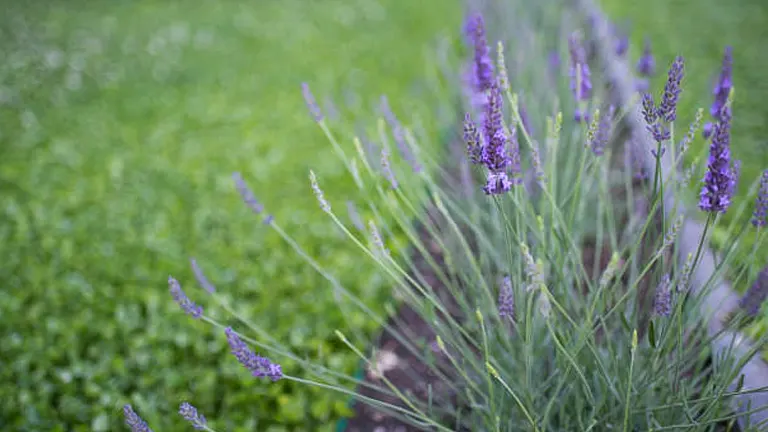
Fertilizing lavender requires a balanced approach. Recognizing and avoiding common fertilization mistakes is crucial for maintaining the health and beauty of your plants. Here are refined guidelines, including often overlooked aspects that can significantly impact lavender’s wellbeing.
Over-Fertilization: The Risk of Nutrient Overload
- Over-fertilization can lead to an imbalance in soil nutrients, creating a hostile environment for lavender. Excess nitrogen, in particular, can cause rapid vegetative growth at the expense of blooms, but it can also lead to root burn or increased susceptibility to pests and diseases due to the lush, but weak, leaf growth.
- Solution: Use fertilizers sparingly, following the less-is-more philosophy. A single, light application in early spring is often sufficient. If in doubt, conduct a soil test to determine the exact nutrient needs of your plants.
The High-Nitrogen Conundrum
- Nitrogen is essential for growth, but its overabundance encourages foliage production over flowering. This not only affects the aesthetic value of the plant but can also deplete its essential oil content, diminishing the quality of lavender used for culinary or therapeutic purposes.
- Solution: Opt for fertilizers with a lower nitrogen content and a higher ratio of phosphorus, which promotes root development and blooming. Organic options, such as bone meal, are excellent phosphorus sources.
Ignoring Soil pH: A Hidden Fertilization Barrier
- Lavender thrives in slightly alkaline soil conditions (pH 6.5 to 8.0). Soil pH outside this range can lock out essential nutrients, making them unavailable to the plant, regardless of fertilization efforts.
- Solution: Test soil pH annually and adjust as needed. To increase pH, apply garden lime; to decrease pH, use elemental sulfur. This ensures that nutrients, both from the soil and added fertilizers, are accessible to your lavender.
Overlooking the Importance of Soil Texture and Composition
- Lavender prefers well-drained soils, and heavy or clay-rich soils can lead to waterlogging, root rot, and nutrient lockout. Over-fertilizing in such conditions exacerbates these problems.
- Solution: Amend heavy soils with sand or gravel and organic matter to improve drainage and aeration. This creates a more hospitable environment for lavender, enhancing the effectiveness of fertilization.
Misjudging Fertilizer Application Techniques
- Applying fertilizer too close to the plant’s base can concentrate nutrients in a small area, potentially burning the roots or foliage.
- Solution: Apply fertilizer evenly around the drip line of the plant, where rainwater naturally drips off the leaves, encouraging roots to spread outward and access nutrients more effectively.
Failure to Adjust Fertilization Based on Plant Age and Season
- Young lavender plants have different nutrient needs compared to established ones. Similarly, seasonal changes affect lavender’s nutrient uptake and growth patterns.
- Solution: For young plants, focus on phosphorus to encourage root development. Reduce fertilization frequency and volume as plants mature. Cease fertilization by mid-summer to allow plants to prepare for dormancy in the fall and winter.
By adhering to these guidelines, you can foster the ideal conditions for your lavender to thrive, ensuring robust growth and vibrant blooms. Remember, the key to successful lavender care lies in understanding its preferences and catering to them with precision and care.
Additional Tips for Lavender Care
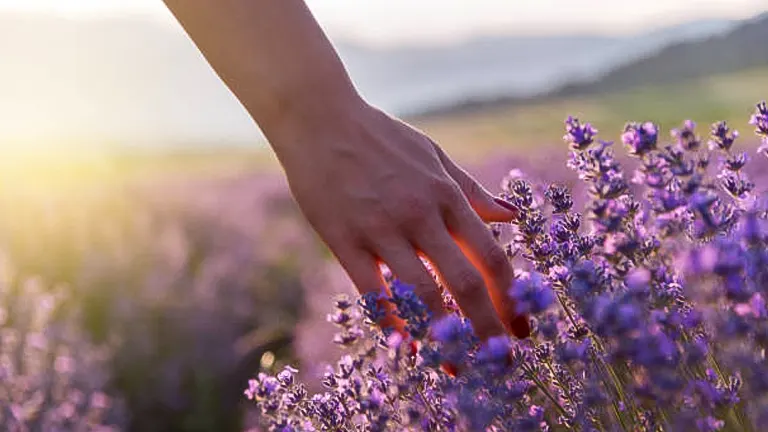
Beyond fertilization, the overall care of lavender plants plays a critical role in their health and vibrancy. Two key aspects of lavender care are proper pruning and understanding the ideal plant-to-plant and row-to-row distances, especially in medium to high-density plantings.
Pruning Techniques for Healthier Growth
Pruning is essential not just for maintaining the shape and aesthetics of your lavender plants but also for promoting a hearty bloom and preventing woody overgrowth. Here’s how to prune effectively:
- Timing: The best times to prune lavender are in the spring, just as the plants start showing new growth, and again after the first bloom cycle in late summer or early fall. This schedule encourages robust growth and multiple bloom cycles.
- Method: Cut back about one-third of the current year’s growth or until you see the first signs of old wood. Be careful not to cut into the old wood, as lavender can struggle to regenerate from these areas.
Plant to Plant and Row to Row Distance for Lavender Orchard
Spacing is crucial for ensuring each lavender plant receives ample sunlight, air circulation, and nutrients from the soil, reducing competition and the risk of disease:
- Medium Density Farming: For medium density, aim for spacing plants 18 to 24 inches apart within rows, with row spacing of 3 to 4 feet. This setup supports good air circulation while allowing plants to grow to their full size.
- High Density Farming: In high-density settings, plants can be spaced closer, about 12 to 18 inches apart, with row spacings of 2 to 3 feet. This approach maximizes space but requires diligent management of fertilization and pruning to maintain plant health.
Environmental Factors Influencing Lavender Growth
Lavender’s allure in gardens is undeniable, but its thriving condition hinges on several key environmental factors. Understanding and optimizing these can significantly impact the health, growth, and blooming of lavender plants.
Sunlight
- Lavender’s need for full sun cannot be overstated. This herb originates from the sunny, dry regions of the Mediterranean, where light is abundant. Sunlight not only drives photosynthesis but also contributes to the development of essential oils, which are responsible for lavender’s fragrance and therapeutic properties.
- Pro Tip: To ensure your lavender gets enough sun, plant it in the brightest area of your garden. If you’re in a particularly hot climate, afternoon shade can prevent scorching in the peak summer months.
Watering
- Lavender’s preference for well-draining soil speaks to its drought-tolerant nature. Overwatering can lead to root rot, a common issue in poorly drained soils. However, while it’s drought-tolerant, during extended dry spells, especially in hotter climates, occasional watering can prevent stress.
- Pro Tip: Employ a “soak and dry” method for watering, deeply watering the plant, then allowing the soil to completely dry out before the next watering. This method encourages deep root growth and enhances drought tolerance.
Temperature
- While generally hardy in USDA zones 5 through 9, lavender’s tolerance to temperature extremes varies among species and cultivars. For example, English lavender (Lavandula angustifolia) is known for its cold hardiness, while French lavender (Lavandula stoechas) prefers warmer conditions.
- Pro Tip: In colder zones, consider mulching with gravel or sand to improve drainage and reflect light, providing extra warmth. In warmer zones, ensure adequate air circulation around plants to mitigate heat stress.
Soil Quality and pH
- Soil quality, encompassing texture, fertility, and pH, plays a pivotal role in lavender’s growth. Lavender flourishes in alkaline soils with a pH of 6.5 to 8.0. Soil that is too acidic can hinder nutrient uptake and overall plant health.
- Solution: Test your soil’s pH and amend accordingly. Adding lime can raise the pH, making the environment more alkaline and conducive to lavender growth.
Wind and Air Circulation
- Lavender benefits from good air circulation, which helps prevent fungal diseases by keeping the foliage dry. In its native habitat, lavender is often exposed to breezy conditions, which it tolerates well.
- Solution: When planting lavender, ensure enough space between plants to facilitate airflow. In sheltered gardens, strategic placement or the addition of a gentle fan can improve air movement.
Light Intensity and Quality
- The intensity and quality of light can influence lavender’s growth and essential oil composition. Regions with high light intensity promote stronger fragrance and more vibrant blooms.
- Solution: If you’re in a region with lower light levels, consider using reflective mulches to increase light intensity around your lavender plants.
Advanced Tips for Troubleshooting Common Lavender Growth Issues
Even with the best care, lavender plants can sometimes face growth challenges. Here are a few tips for troubleshooting common issues:
- Leggy Plants: If your lavender becomes leggy, it’s likely due to insufficient light or over-fertilization. Ensure your plants are receiving enough sunlight and adjust your fertilization approach if necessary.
- Poor Blooming: Inadequate pruning or incorrect fertilization can lead to poor blooming. Review your pruning technique and ensure you’re not over-fertilizing, especially with nitrogen-heavy formulas.
- Disease and Pest Issues: Maintain good air circulation around your plants and keep the area weed-free. If pests or diseases occur, treat with appropriate organic or synthetic remedies, following label instructions carefully.
By integrating these additional care practices with the right fertilization approach, you can ensure your lavender plants remain healthy, vibrant, and prolific bloomers. Remember, the secret to successful lavender cultivation lies in a balance of proper nutrition, careful pruning, and attentive overall care.
Final Thoughts on Lavender Care
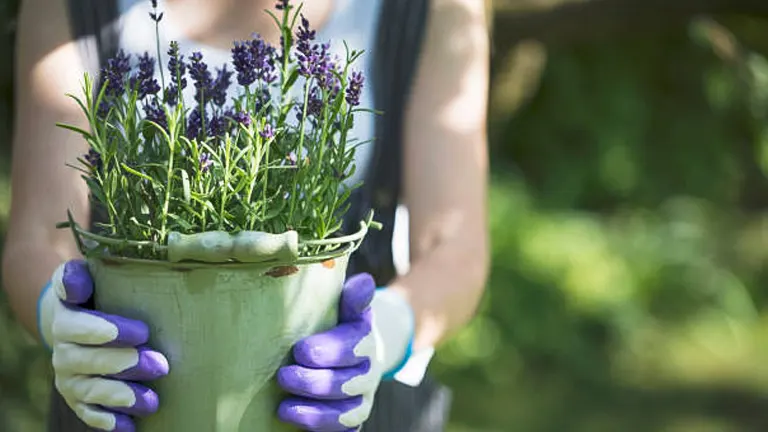
Caring for lavender extends beyond the specific actions of fertilizing, pruning, or spacing. It’s about understanding the plant’s lifecycle, its preferences, and how it interacts with its environment. Here are some additional insights to keep in mind:
Adapting Care Strategies by Season
- Winter Preparation: In colder climates, lavender may require some protection from freezing temperatures. Consider mulching lightly around the base of the plants with gravel or sand to improve drainage and reduce root rot risk.
- Summer Care: During hot summers, ensure your lavender plants receive enough water to prevent stress, keeping in mind that overwatering is more detrimental than under-watering.
Companion Planting
Companion planting can enhance your lavender’s health and the diversity of your garden. Plants like rosemary, sage, and thyme share similar growing conditions and can complement your lavender both in the garden and in culinary uses.
Harvesting and Utilizing Lavender
- Harvesting Tips: For the best fragrance and potency, harvest lavender flowers in the morning after the dew has evaporated but before the sun is at its strongest. This timing captures the oils at their peak.
- Uses: Lavender can be used in a variety of ways, from culinary recipes and herbal teas to essential oils and natural remedies. Experimenting with lavender can be a rewarding aspect of growing this versatile plant.
Conclusion
Fertilizing lavender plants for peak bloom and growth is a delicate balance that requires understanding both the plant’s specific nutritional needs and the environmental factors that influence its wellbeing. By selecting the right type and amount of fertilizer, applying it at strategic times, and considering the plant’s sunlight, water, and temperature requirements, gardeners can cultivate healthy, vibrant lavender. The key lies in moderation and attentiveness, ensuring these fragrant plants reach their full potential in any garden setting.
FAQs
- Is it necessary to adjust fertilization based on the lavender variety?
While basic fertilization requirements are similar across most lavender varieties, some, like Lavandula x intermedia (Lavandin), may benefit from slightly more fertilizer due to their larger size. It’s always a good practice to research the specific needs of your lavender variety. - How can I tell if my lavender is getting too much nitrogen?
Lavender receiving too much nitrogen typically exhibits lush, green foliage growth with a notable lack of blooms. This imbalance can detract from the plant’s aromatic qualities and overall health. - Can coffee grounds be used as a fertilizer for lavender plants?
Coffee grounds are acidic and lavender prefers alkaline soil, so using them directly as fertilizer is not recommended. However, composted coffee grounds can be part of a compost mix applied sparingly, as they contribute to organic matter content without significantly altering pH. - What role does potassium play in lavender’s bloom and growth, and how can I ensure my plants get enough?
Potassium aids in flower formation and improves overall plant health, making it crucial for vibrant blooms and robust growth. If a soil test indicates a potassium deficiency, consider applying a potassium-rich fertilizer or potash in moderation. - Should I alter my fertilization approach for lavender in containers versus in a garden bed?
Lavender in containers can be more susceptible to root burn from over-fertilization and may require a lighter, more diluted fertilization approach compared to those in garden beds. Additionally, container plants may benefit from more frequent but lighter feedings due to the limited soil volume. - How does the age of the lavender plant affect its fertilization needs?
Young lavender plants in their first growing season may benefit from a slightly higher phosphorus fertilizer to encourage root development. Mature plants, in contrast, require less fertilization and benefit more from phosphorus and potassium to support bloom production. - Is there a difference in fertilization needs for lavender grown in arid climates versus humid climates?
In arid climates, lavender’s natural environment, plants typically need less fertilizer and benefit from the addition of organic matter to improve soil structure. In humid climates, careful attention to drainage and avoiding over-fertilization are key, as higher moisture levels can lead to nutrient leaching and root diseases. - Can mulching impact the fertilization of lavender plants?
Mulching with inorganic materials like gravel can help maintain soil alkalinity and improve drainage, indirectly supporting the plant’s nutritional uptake by creating an optimal root environment. Organic mulches should be used cautiously as they can retain moisture and potentially alter soil pH over time.
Fertilizing lavender for peak bloom and growth is straightforward: use the right fertilizer sparingly and at the right times. With these simple steps, you can enjoy lush, fragrant lavender in your garden.

Benjamin Brooks
Forestry AuthorGreetings! I'm Benjamin Brooks, and my journey over the past 15 years has revolved around the fascinating realms of content creation, expertise in snow clearing, and the intricate world of lumberjacking and landscaping. What began as a simple curiosity about the natural world and heavy machinery has evolved into a passionate profession where my love for crafting words intertwines seamlessly with my lumberjacking and garden skills.


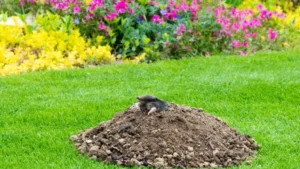


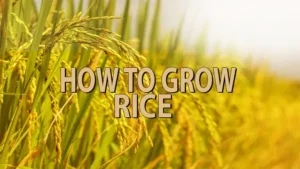





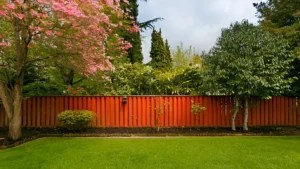
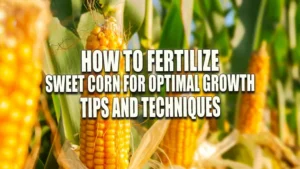
Leave your comment